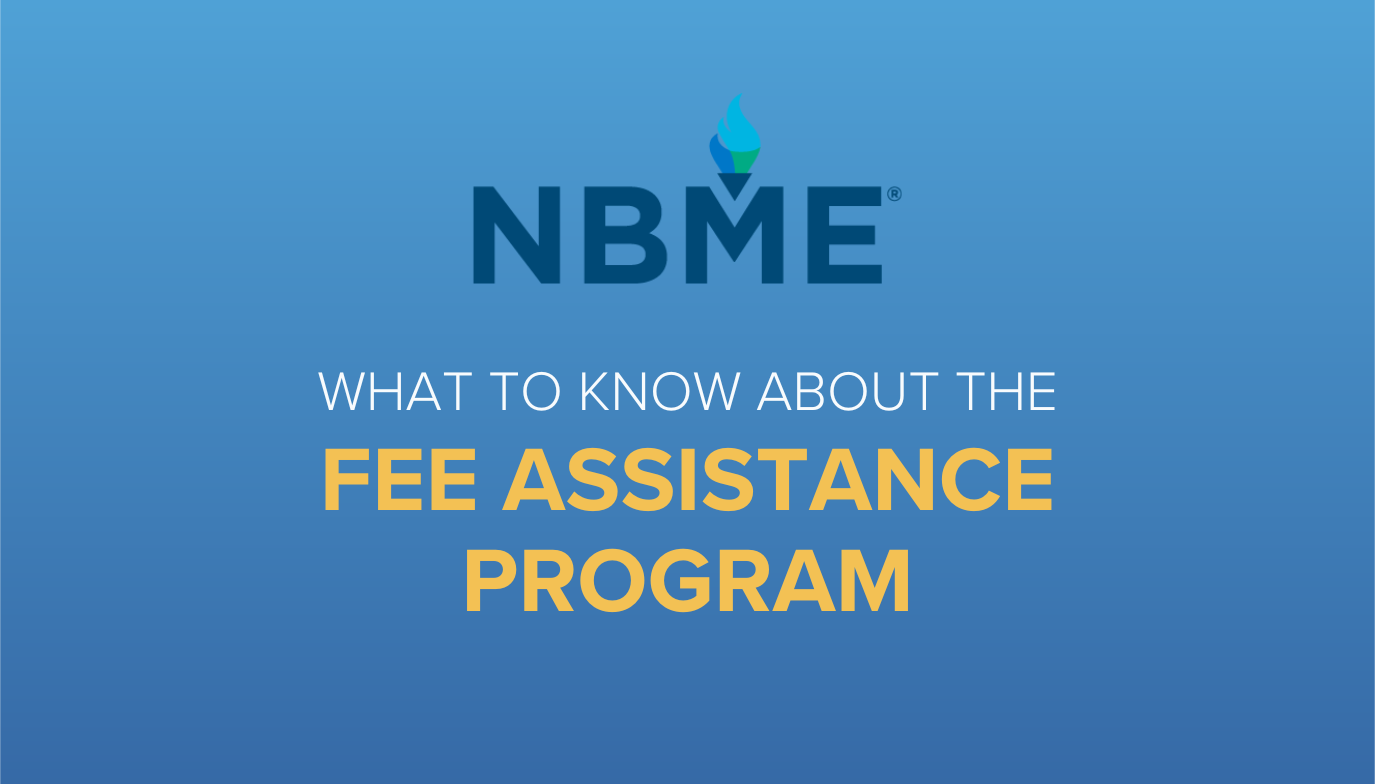Success on your USMLE exams hinges on two things: having a solid foundation of medical knowledge, and developing strong USMLE test taking skills. The importance of a strong knowledge base is self-evident, and good execution on exam day allows you to effectively apply that knowledge under exam conditions.
Building your knowledge base involves a combination of strategies—reading textbooks, creating flashcards, and immersing yourself in question banks. However, developing USMLE test taking skills requires a different approach, which we’ll discuss in this post.
Before diving into some USMLE test-taking strategies that can help you excel on exam day, let’s talk a little about building that solid foundation of knowledge that’ll be put to the test. Just how do you go about becoming a medical expert, and what can you do to make the process as efficient as possible?
Building a Foundation of Medical Knowledge
There are a number of ways to build a base of knowledge. In the end, you’re the best judge of what works for you, but the following techniques can help:
Active Learning
Instead of simply reading through material, engage in active learning techniques such as creating and reviewing flashcards or teaching concepts to a peer.
Practice Questions
Continue doing USMLE practice questions on the topics you review. Be sure to focus on understanding the rationale behind both correct and incorrect answers.
Review Mistakes
Analyze your mistakes thoroughly to understand why you got them wrong and how you can avoid making similar errors in the future. This will help you identify patterns and areas for improvement, especially in your weaker subjects.
Rest and Relaxation
Ensure you’re getting enough rest and taking breaks to avoid burnout. A well-rested mind performs better on exams.
4 USMLE Test Taking Strategies
As you build your base of knowledge and then apply it to USMLE practice questions, it’s important to realize that getting a question wrong doesn’t mean you didn’t know the answer. Maybe you did, but you still got the question wrong. You may have misread it, or misread the answer choice.
Or, you may have chosen a response that only partially answers what the question is asking. For instance, we’ve all experienced a question that asks for the initial best step, and perhaps you picked a diagnostic modality or treatment that’s correct on the management algorithm, but not the first thing you should do. In cases like these, it’s important to start working on your test taking skills.
These skills are more than just answering questions—they’re the ability to dissect the question and answer choices, integrate critical thinking with your knowledge, and find the best possible answer choice from the selection you’re given. Whether you’re tackling a question you’re uncertain about or verifying an answer you feel confident in, USMLE test taking strategies can help bridge the gap between what you know and what the exam demands.
There are as many testing tricks out there as there are things under the sun, but some good USMLE test taking strategies to hone include the following:
1. Read the question closely for key details (positives and negatives).
Highlight key details as you read. Focus on pertinent positives and negatives that support a diagnosis or management style you have in mind.
Example
“A 32-year-old female presents with fatigue and a rash. She denies fever, joint pain, or swelling. Physical examination reveals a malar rash.”
Highlight positives: Fatigue, malar rash
Highlight negatives: Denies joint pain or swelling
Application: These details suggest systemic lupus erythematosus (SLE), while ruling out other rheumatologic or infectious conditions that have joint pain.
When reading the question, be sure to focus on specific wording. Slight changes in wording can have a big impact on the question stem. For example, let’s say the question stem is asking for the best next step. That would be answered differently than if it asked about overall management.
2. Use the process of elimination.
Process of elimination allows you to use key question stem details to rule out answer choices. For questions you feel confident about, this is a quick way to double-check yourself and ensure you’re not making a mistake.
For more challenging questions, this provides a starting point to move efficiently through the answer choices and focus the majority of your thinking on the answer choice(s) that are most likely to be correct.
With the process of elimination, the goal is to first go through the answer choices and remove any answers that are obviously wrong (e.g., would not cause the patient’s symptoms, could not account for the laboratory findings). From there, you can evaluate the remaining answer(s) to find the best fit.
Eliminating distractors simplifies decision making and saves time.
Example
Question: “A 45-year-old male presents with new-onset diabetes, skin hyperpigmentation, and joint pain. There has been no change in his weight. What is the most likely diagnosis?”
A) Addison’s disease
B) Hemochromatosis
C) Cushing’s syndrome
D) Type 1 diabetes mellitus
Step 1: Rule out Addison’s (hypoglycemia more common), Cushing’s (no weight changes), and Type 1 diabetes (not associated with joint pain).
Step 2: Hemochromatosis fits better with the constellation of symptoms.
3. Save time for the end of each block.
Use time at the end of each block to review flagged questions or ones you were unsure about.
4. Figure out beforehand when you’ll take breaks.
This is a good idea because then you don’t have to think about it on exam day. Develop your own technique for managing time during practice. Many students I work with find it useful to take breaks every 2 or 3 question blocks.
Remember that for USMLE, you have a cumulative break time pool that you can use how you want. By taking frequent, short breaks, you’ll stay fresh and on track to finish without running out of time or taking too long of a break, which can be detrimental.
USMLE Test Taking Strategies FAQs
Some common questions I get asked as a tutor include the following:
1. How do I improve my USMLE test taking strategies, and how long does it take?
Let’s take the second part of the question first. This is kind of a non-answer, but the time to develop strong test taking skills varies based on factors such as baseline knowledge, experience, and study habits. However, in my experience, most people can see noticeable improvement in as little as 3 to 4 weeks with deliberate practice. For those skills to carry over from Step 1 to Steps 2 and 3, it’ll take more time.
As for the second part of the question, improving test-taking skills requires a combination of baseline medical knowledge, strategy development, and mental preparation, as well as a willingness to implement and try new strategies based on how effective they are for you. The most important thing is to practice your strategies with high-quality question banks. In doing so, you’ll be able to analyze each question, even the ones you answer correctly, to understand the reasoning behind your choice and the choices the test makers wrote in.
If you’re looking for a Qbank to help out with USMLE studying this year, look no further—Blueprint has got you covered with practice questions, detailed explanations, performance analytics, and more! 💙
🌟 Step 1 Practice Bundle – Includes 2 full-length USMLE practice exams with a total of 560 NBME®-formatted practice questions, plus 500 additional questions in a Qbank
🌟 Step 2 & Shelf Exams Qbank – Includes 5,500+ practice questions (1,500 Step 2 questions and 4,000 shelf questions across 8 specialties), plus 8 mock shelf exams!
Other important facets of test taking such as time management, building stamina for long exams, and adapting your approach will come with time. Start with untimed practice to build accuracy and then make the transition to timed conditions to see how you handle the added time pressure. Learn to flag questions for later, so you don’t spend too much time on them.
Simulate full-length mock exams under realistic conditions. You’ll be tired after a full day of reading and answering USMLE questions, but it’s better to get used to it now.
2. That’s great and all, but how will this benefit me?
Implementing these USMLE test taking strategies will improve not only your USMLE score, but scores on future in-service training tests, board certification exams, and beyond. Your testing capabilities and confidence will get a boost. Plus, you’ll be able to study more efficiently and have to spend less time on preparing. (Or put in the same preparation time, but get better results.)
3. What if I don’t like your USMLE test taking strategies?
Give them a genuine try, and if they aren’t helpful, forget them. Do what works for you.
In general, if you don’t like the standard test taking strategies outlined above, try the following:
Change your learning approach.
There are all sorts of different approaches to learning depending on how you like to do it.
Several of them include:
Visual: Use concept maps, color coded notes, and diagrams.
Auditory: Listen to podcasts, record yourself explaining concepts, or use study groups.
Kinesthetic: Teach others, learn in groups, or write things out repeatedly.
Modify your test taking strategy.
Answer backwards: Read the answer choices first, then the question.
Cover up answer choices: Think of the answer before looking at the options to avoid bias.
Or eat a chocolate muffin if you must before every section. Use whatever works for you.
Seek a different approach from peers or mentors.
Talk to people who have excelled in similar exams. Some may have unique strategies that work for them.
Consider professional test prep coaching if self-study strategies aren’t working, or to get a fresh perspective if you’re in a rut.
4. How do you deal with test day anxiety?
Feeling anxious before a performance is normal. From athletes to violinists to someone’s first day as an attending physician, almost everyone experiences nerves to some degree, and I certainly did.
Adequate preparation will make you confident on exam day. After all, you passed all of the practice exams. Recognize that you have the knowledge and tools to succeed on the exam and the jitters will start to fade once you answer a few questions. Thousands of people pass their USMLE exams every year, and you can too!
Before the Exam
Being prepared for test day with snacks, water or your favorite drink, your ID, etc., can help. Know your preferred route to the test center and have a backup one in place just in case of heavy traffic or road closures. Arrive early, get situated and take some deep breaths. Make sure you’re fed, hydrated, and comfortable prior to starting the exam.
During the Exam
Once you begin, read the questions and answer choices carefully, use the strategies that you’ve practiced, and select the answer you deem best. And then move on. It’s important not to dwell on a question. Flag it if needed, but remember, it’s a timed exam!
Final Thoughts
The strategies we’ve outlined here are designed to help you pass your USMLE exams, and they can 100% do that. But always remember the following: this isn’t the first exam you’ve taken! At this stage, you’ve taken and passed plenty of standardized exams since middle school. So be confident in yourself—you’ll pass this one too.
Implement some of these strategies, reach out for help if you need it, and soon you’ll be one of the thousands of med students this year for whom USMLE Step exams are in the rearview mirror!





